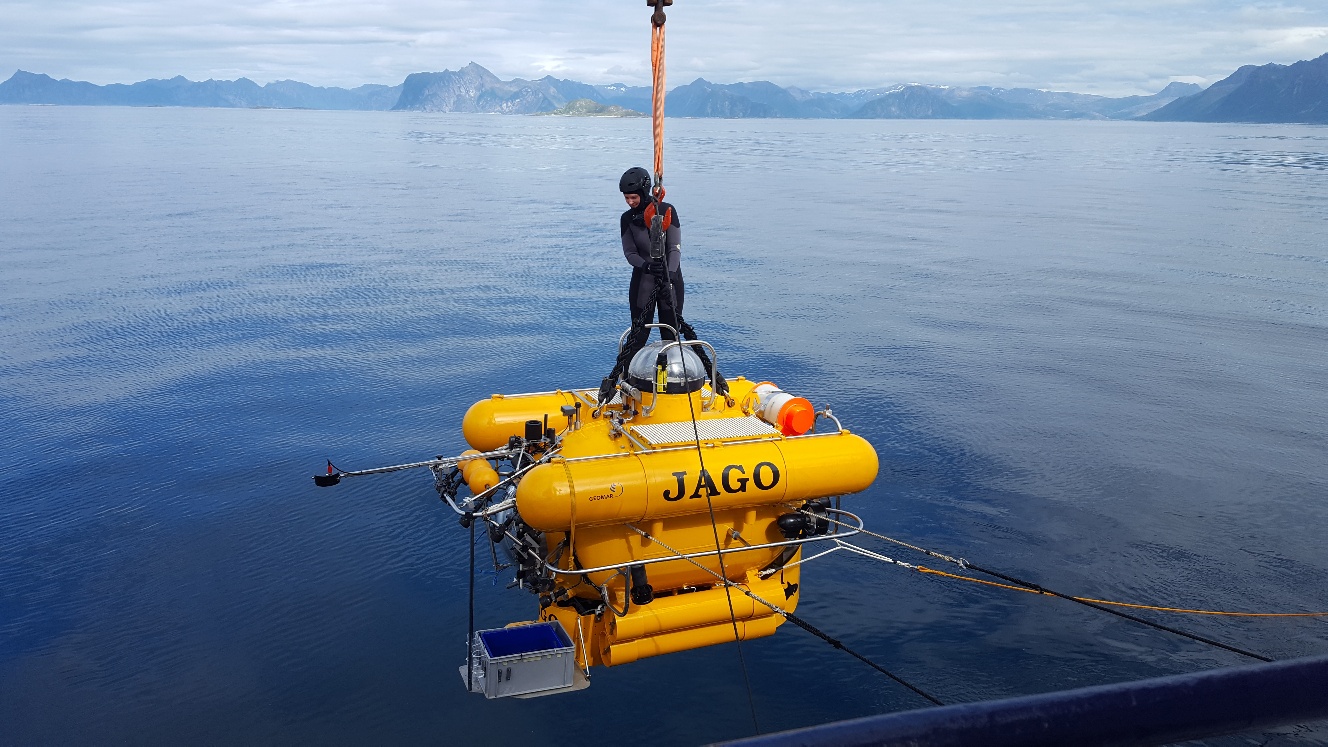
Unlike shallow corals reefs, which are restricted to warm clear waters, deep or cold-water corals are found in almost all the world’s oceans. In the Atlantic, the most abundant cold-water reef-building coral is Lophelia pertusa, a branching stony coral that can form structures over a hundred meters tall and several kilometers long. Some of the largest and most stunning of these ecosystems occur in the frigid waters off the coast of Norway, as far north as the Arctic Circle. So yes, there are indeed corals in the Arctic!
An international team of scientists, led by Janina Büscher (GEOMAR Helmholtz Centre of Ocean Research, Germany), is currently working on the Lophelia reefs off Norway, aboard the Research Vessel Poseidon and submersible JAGO (both owned by GEOMAR). The objective of this research is to understand coral physiology under natural conditions, so we can better interpret controlled laboratory experiments. This will help us understand how future changes in ocean acidification, temperature, and food availability will affect the physiological responses and therefore the resilience of cold-water corals. This information is critical for effective management and conservation of these ecologically important ecosystems, as approximately 70% are predicted to be exposed to acidified water by 2100.
During this cruise, experiments will be conducted in situ (on the reefs) and in the lab, to examine differences in the physiological condition of the corals and other important species at a series of inshore and offshore reefs, from the northernmost populations in Norway, to those further south. The laboratory experiments will measure the effects of multiple stressors, and the in situ studies will provide rare and valuable information on how the coral responds to natural environmental conditions. I was invited to join the team to conduct some community analysis of the different sites and collect Lophelia samples for analysis of reproduction and population genetics. All samples collected during this study will be used for multiple purposes – nothing is wasted.
 The production of large numbers of fat-rich eggs requires a great deal of energy, so in times of stress, animals may shift their energy to tissue maintenance and repair rather than reproduction. Comparing egg abundance, size, and development stage in corals from different locations and environmental conditions, can provide some insight into whether some populations are more physiologically stressed than others. The data collected during this cruise will contribute to our understanding of how these reefs function and how future ocean conditions may affect them.
The production of large numbers of fat-rich eggs requires a great deal of energy, so in times of stress, animals may shift their energy to tissue maintenance and repair rather than reproduction. Comparing egg abundance, size, and development stage in corals from different locations and environmental conditions, can provide some insight into whether some populations are more physiologically stressed than others. The data collected during this cruise will contribute to our understanding of how these reefs function and how future ocean conditions may affect them.
To follow the progress of this cruise, check out the blog at http://www.oceanblogs.org/pos525/

